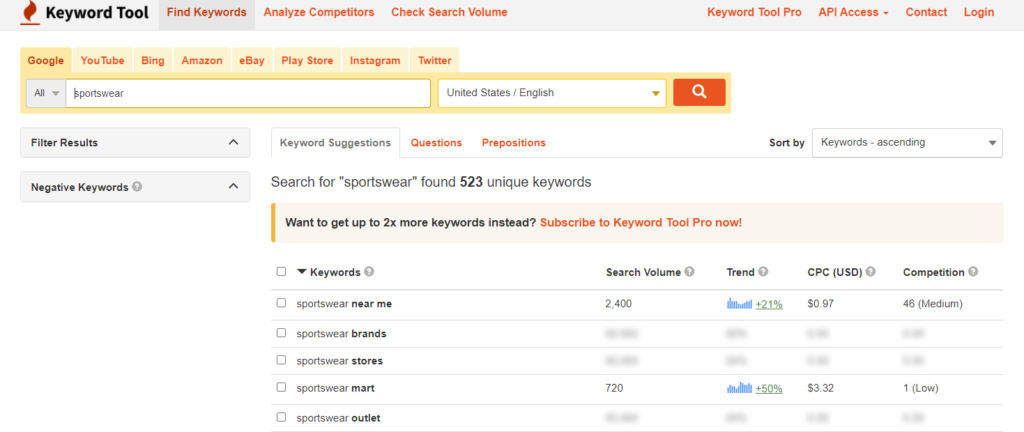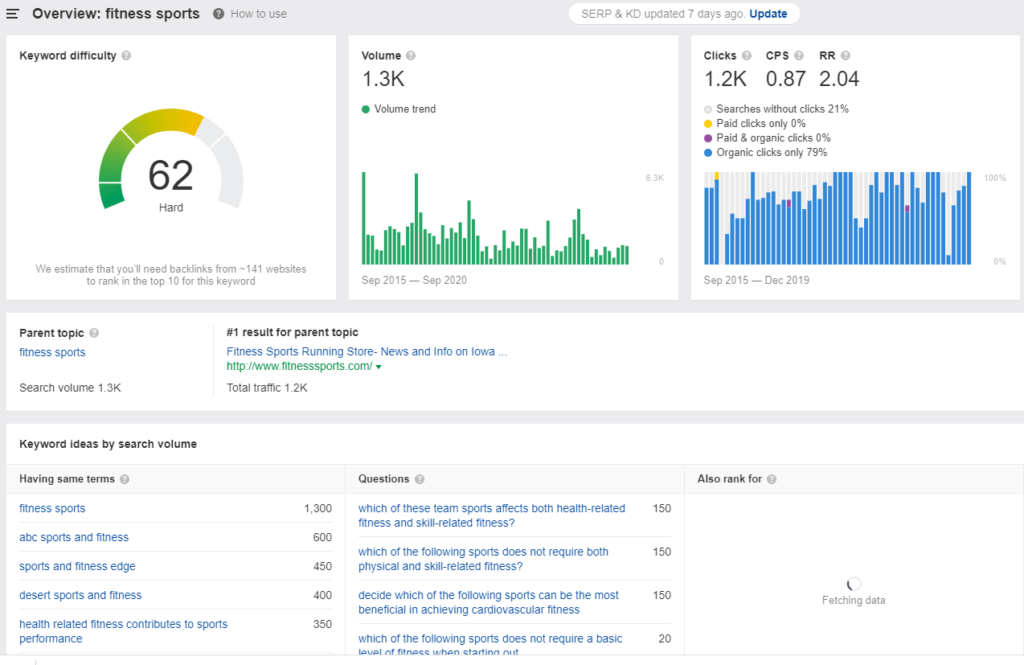Search Engine Optimization (SEO) can help create brand awareness and improve search visibility. There are a lot of steps you need to take to create an SEO strategy. However, it is not always clear where to start. You may ask what is the first step in the search engine optimization process for your website? The answer is Keyword Research. Knowing your target audience and what they search for is the main key to optimizing your website’s reach.
We give you a step-by-step guide on how to apply Keyword Research for your website. To learn what needs to be done, first, we need to first understand what Keyword Research is.
What is Keyword Research?
Keyword research is a method of finding the best keywords for your business to drive organic traffic to your website. The aim is to pinpoint the words and phrases that your target audience use when searching for information in relation to your products.
This research should be implemented at the start of your SEO process so as to avoid targeting the wrong search terms and having to re-optimize your marketing campaigns. Keyword research is used both to optimize your content for search engines and so to analyze which topics are best to write about to maintain high rankings in searches for your target keywords
Moreover, keyword research helps to drive the right visitors to your website. In the end, your goal is to convert your visitors into customers. So even if you have thousands of visitors a day, if they are not your intended audience, you will most likely not succeed in converting them. So ideally you need to optimize your website so that the visitors are your targeted audience, even if that means having fewer visitors.
Therefore, the more specific your keyword is (better known as a long-tail keyword), the more probable it is that your visitor has the intention of purchase. For example, searching for capture devices is most likely used to find information about those devices. Whereas searching for the specific model Elgato Game Capture HD60 S are probably users that already knows that they want and are looking for the best seller.
Step 1 – Make a list of relevant topics
Your brand has a main topic that describes what your business does. Based on your main topic and the goals you wish to achieve for your business, you need to expand your main category into relevant topics. Make a list of all the topics that are relevant to your brand that you wish to rank in search engines.
Let’s say you specialise in selling sports fitness products. Ideally, you want to break down this category into more specific categories that relate to your brand. Some examples would include trekking, swimming, or running.
The topics need to be topics that are important to your brand and related to your buyer’s persona. Your mindset should be shifted to thinking of topics that your target audience will search for. These categories can then be broken down further into keywords that are related to them. Read the next section if you want to understand how to do this.
If you are lost on how to break down your main topic, use a resource like AnswerThePublic that helps you visualize what users are asking about by listening in on autocomplete data from search engines.
Step 2 – Create a list of seed keywords
The next step after dividing your main category into different sub-topics, you can begin to create a list of seed keywords. The seed keywords need to be related to your sub-topics and be words that your target audience will use when searching in search engines.
Seed keywords will become the basis of your keyword research. It is the place where you will confirm your niche and discover who your main competitors are.
One of the most important methods to create seed keywords is by brainstorming what your target audiences are interested in. To take the previous example, if your brand specialises in sports fitness wear, then your audience will most likely be searching for topics related to different types of sports. For example, if one of your sub-topics is trekking, a user may decide to search for ‘waterproof trekking boots’ or ‘lightweight trekking backpacks’.
Apart from understanding what your target audience is searching for, there are other factors that come into play when choosing the best seed keywords:
- Words that are directly related to your product or service.
- The related search terms found in search engines.
- Your Competitors’ keywords
- The ranking for certain pages using those keywords (base research from these)
For further information on how to find your seed keywords, read here.
Step 3 – Use good keyword research tools & sort by search intent
Keyword Research Tools
Once you have established your goals, topics, and seed keywords, it is now time to make use of keyword research tools. By using such tools, you can refine further your search terms.
One great free tool is Keyword Tool. Keyword Tool generates up to 750 long-tail keywords suggestions for every search time you provide it. It also boasts a reliability score of 99.99%. Moreover, Keyword Tool gives alternative keywords for your search terms including those that include prepositions and questions.

If you want to know the search volume for each keyword, you will need to subscribe for Keyword Tool Pro.
Another keyword tool is Ahrefs Keyword Explorer if you are looking for very detailed information. It retrieves thousands of relevant keyword ideas with very accurate results. It also includes search volume, keyword difficulty and other advanced metrics like the number of clicks, return rate and more. However, it is not cheap, and it will cost you $99 for the Lite Version but will give you access to an abundance of SEO features that will help your business.

Search Intent
Unfortunately, it’s not enough to just use high-volume keywords to improve your search rankings for a page. Google’s machine learning algorithm compare search terms with user queries to understand their search intent.
Search intent is the reason behind the user’s specific search term. There are several reasons to what drives people’s search habits. For example, why is the person searching for this, are they searching because they need an answer to a question or are they searching for a specific website? And the most important question is, are they searching with the intent to buy?
When you address these search intents, you can then finally be able to filter further your keyword research. At the end, it is a matter of finding high-volume keywords related to your topic that directly meet your target audience’s search intent.
Final Thoughts and Recommendations
Once you apply your keyword research, the search engine optimization process becomes straightforward. So make sure to apply the process carefully and take your time to really understand what your audience is interested in. Follow the above steps and you will be on the right track to getting your website optimized for high rankings in the right searches.

